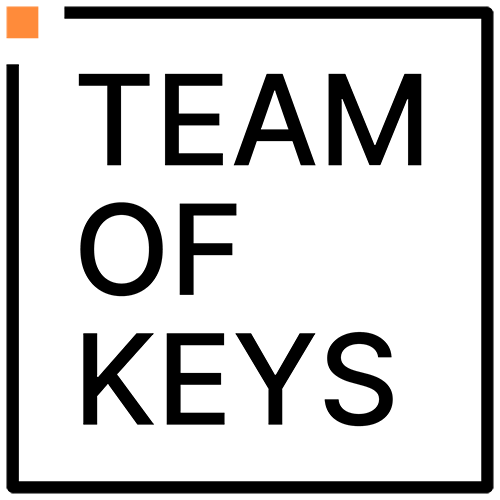In today’s fast-paced digital landscape, mobile apps are more than just a convenience; they’re a necessity. From e-commerce and gaming to fitness and finance, apps dominate every industry. With over 7.5 billion mobile users globally, the demand for seamless, high-performing, and cross-platform apps has skyrocketed. To keep up with user expectations and technological evolution, developers must use the best Mobile App Development Frameworks available. As we move into 2025, let’s explore the top frameworks shaping the future of app development.
1. Flutter – The All-in-One Powerhouse
Flutter, developed by Google, continues to lead the mobile development race in 2025. It can create beautiful and natively compiled applications for Android, iOS, web, and desktop. This capability from a single codebase makes it a favorite among developers.
Why it stands out:
- Hot reload feature allows developers to see changes instantly.
- Uses Dart language, which is fast and expressive.
- Provides native performance with customizable widgets.
Best for: Startups and businesses that need cost-effective cross-platform solutions without compromising on performance or UI design.
2. React Native – The Developer’s Favorite
Created by Facebook, React Native remains a strong player in 2025. It empowers developers to build mobile apps using JavaScript and React. Its vast ecosystem, third-party plugin support, and native components make it a robust choice for large-scale applications.
Why it stands out:
- Code reuse across multiple platforms.
- Supported by a strong community of developers.
- Integration with native modules for enhanced performance.
Best for: Companies that need rapid development cycles and scalability, such as social media, e-commerce, or streaming platforms.
3. SwiftUI – Apple’s Native Excellence
For iOS developers, SwiftUI continues to dominate as the framework of choice. Introduced by Apple, it provides a declarative syntax that simplifies UI creation and reduces code complexity. With seamless integration into Xcode, SwiftUI makes developing apps for iPhone, iPad, Apple Watch, and macOS a breeze.
Why it stands out:
- Native look and feel with high performance.
- Real-time previews while coding.
- Automatic Dark Mode support and accessibility features.
Best for: Developers building apps exclusively for the Apple ecosystem who want full control over user experience and performance.
4. Kotlin Multiplatform Mobile (KMM) – The Future of Cross-Platform
KMM, backed by JetBrains, is becoming increasingly popular for developers who love Kotlin. It allows shared codebases between Android and iOS, reducing redundancy while maintaining native functionality.
Why it stands out:
- Shared business logic while maintaining native UI layers.
- Supported by JetBrains and Google, ensuring future growth.
- Offers better performance than hybrid frameworks.
Best for: Android-heavy teams looking to extend their apps to iOS without rebuilding from scratch.
5. Xamarin – The Veteran Framework
Backed by Microsoft, Xamarin remains a trusted framework in 2025 for developing cross-platform apps using C# and .NET. Its robust performance, coupled with native API access, makes it suitable for enterprise-grade applications.
Why it stands out:
- Seamless integration with the Microsoft ecosystem (Azure, Visual Studio).
- Near-native performance and UI flexibility.
- Strong security and enterprise-level scalability.
Best for: Businesses already invested in Microsoft technologies or seeking reliable enterprise app solutions.
6. Ionic – The Web Developer’s Gateway to Mobile
Ionic continues to thrive as an open-source framework. It uses HTML, CSS, and JavaScript. This allows web developers to transition easily into mobile app development. Its Capacitor runtime enhances native functionality, providing smooth performance.
Why it stands out:
- Rapid prototyping and easy learning curve.
- Works seamlessly with Angular, React, and Vue.
- Strong community and extensive plugin library.
Best for: Web developers who want to build hybrid apps quickly with web-based technologies.
7. NativeScript – The Native Performance Expert
NativeScript is gaining traction among developers who need true native performance using JavaScript or TypeScript. It gives direct access to native APIs, eliminating the need for additional bridges.
Why it stands out:
- Native UI rendering for superior performance.
- Integration with Angular and Vue.js.
- Great for apps requiring native animations and hardware-level access.
Best for: Developers seeking native-like performance with JavaScript-based frameworks.
8. Unity – For Next-Gen Gaming & AR Apps
Unity is primarily known for game development. It has evolved into a versatile framework for AR (Augmented Reality) and VR (Virtual Reality) mobile applications. As immersive experiences become mainstream in 2025, Unity Game Development capabilities in 3D rendering and physics simulation make it indispensable.
Why it stands out:
- Cross-platform AR/VR development support.
- Real-time 3D rendering and physics engine.
- Perfect for interactive mobile games and simulations.
Best for: Developers creating immersive gaming, AR/VR, or metaverse applications.
Comparison Table: Top Mobile App Frameworks in 2025
| Framework | Language | Platform Support | Best For | Key Strength |
| Flutter | Dart | iOS, Android, Web, Desktop | Startups | Fast UI and performance |
| React Native | JavaScript | iOS, Android | Cross-platform apps | Reusable code |
| SwiftUI | Swift | iOS, macOS | Apple ecosystem | Declarative syntax |
| KMM | Kotlin | iOS, Android | Native-like apps | Shared logic |
| Xamarin | C# | iOS, Android, Web | Enterprises | Microsoft integration |
| Ionic | HTML, CSS, JS | iOS, Android | Hybrid apps | Web to mobile transition |
| NativeScript | JS/TS | iOS, Android | Native performance | Direct API access |
| Unity | C# | iOS, Android, AR/VR | Gaming | 3D/AR/VR support |
Why Choose Team of Keys?
Choose Team of Keys for your app development needs. We combine innovation, expertise, and technology. Our goal is to deliver apps that truly make an impact. Our team of skilled developers, designers, and strategists works closely with you from concept to launch. We ensure every feature aligns with your business goals. Each feature also fits your user needs. We specialize in building scalable, high-performance, and visually engaging mobile applications that enhance customer experience and drive growth. We handle iOS, Android, and cross-platform development. Our team ensures seamless functionality and cutting-edge design. We provide reliable post-launch support. This makes us your trusted partner for end-to-end app development success.
Final Thoughts
The mobile app development world in 2025 is brimming with innovation. Choosing the right framework depends on your goals. It also depends on your team's expertise and project requirements. Whether you prioritize speed, performance, scalability, or UI design, there’s a framework perfectly suited for you. Businesses aiming to stay ahead of the curve should invest in these frameworks. This ensures they can deliver next-gen mobile experiences. These experiences captivate users and drive growth.











